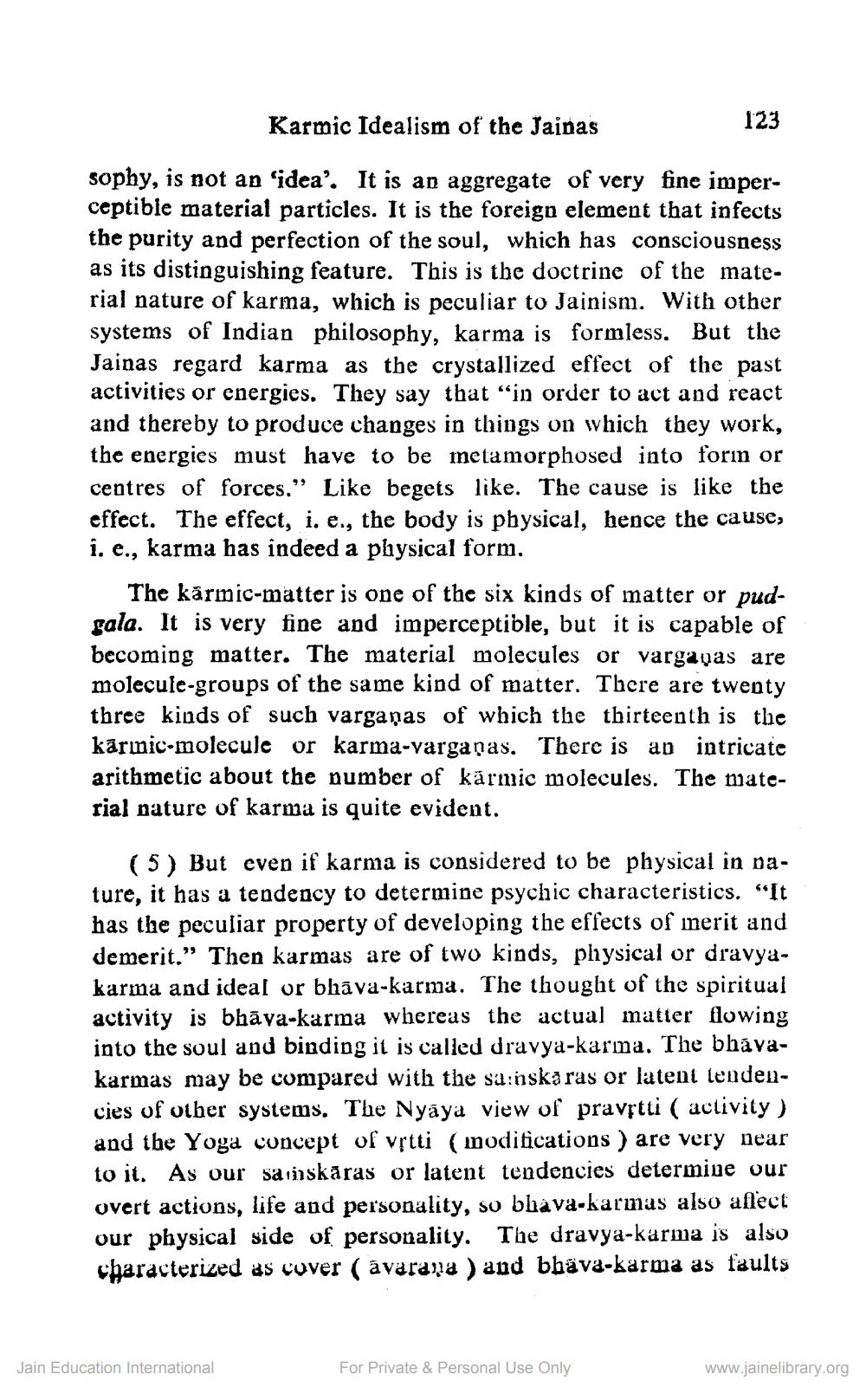________________
Karmic Idealism of the Jainas
123
sophy, is not an 'idea'. It is an aggregate of very fine imperceptible material particles. It is the foreign element that infects the purity and perfection of the soul, which has consciousness as its distinguishing feature. This is the doctrine of the material nature of karma, which is peculiar to Jainism. With other systems of Indian philosophy, karma is formless. But the Jainas regard karma as the crystallized effect of the past activities or energies. They say that "in order to act and react and thereby to produce changes in things on which they work, the energies must have to be metamorphosed into forin or centres of forces.” Like begets like. The cause is like the effect. The effect, i. e., the body is physical, hence the cause, i. e., karma has indeed a physical form.
The kármic-matter is one of the six kinds of matter or pudgala. It is very fine and imperceptible, but it is capable of becoming matter. The material molecules or vargayas are molecule-groups of the same kind of matter. There are twenty three kinds of such varganas of which the thirteenth is the karmic-molecule or karma-varganas. There is an intricate arithmetic about the number of karmic molecules. The material nature of karma is quite evident.
(5) But even if karma is considered to be physical in pature, it has a tendency to determine psychic characteristics. "It has the peculiar property of developing the effects of merit and demerit." Then karmas are of two kinds, physical or dravyakarma and ideal or bhāva-karma. The thought of the spiritual activity is bhāva-karma whereas the actual matter flowing into the soul and binding it is called dravya-karma. The bhavakarmas may be compared with the sa:iska ras or latent lendencies of other systems. The Nyāya view of pravrtti ( activity ) and the Yoga concept of vrtti (imodifications ) are very near to it. As our sainskāras or latent tendencies determine our overt actions, life and personality, so bhava-karmas also aflect our physical side of personality. The dravya-karma is also characterized as cover (avarapa ) and bhäva-karma as faults
Jain Education International
For Private & Personal Use Only
www.jainelibrary.org




